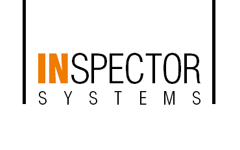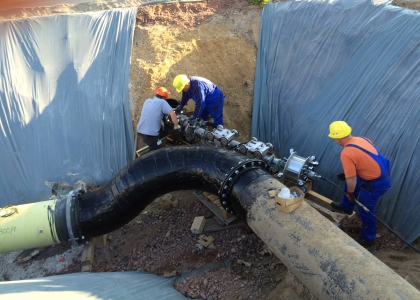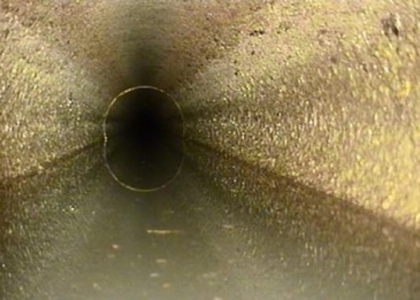Grey Cast Iron and Steel - Magnet/Eddy Current Inspection Technology makes it possible.
Approximately 150 years ago, the municipal supply and disposal structure in Europe for gas, drinking water and sewage was built almost exclusively in cast iron pipes.
The special thing about this: A substantial part of today's supply and disposal network still originates from that time. With technological progress, the cast iron pipe system has been significantly further developed. The triumphal march of the cast iron pipe from the then grey cast iron pipe (cast iron with lamellar graphite) up to the modern ductile cast iron pipes (cast iron with spheroidal graphite) reflects industrial history, as no other pipe material has offered verifiable evidence of its longevity. So, too, in one of Bavaria's oldest towns, the town of Neuburg an der Donau. Neuburg is – as one can see in the wonderfully impressive upper old town – an historic town with 30,000 inhabitants situated between the gentle Jura peaks and the Donaumoos, the largest lowland fen of southern Germany.
In order to ensure the continued operational safety of an approximately 3 kilometre long underground sewage pressure pipe from the 1960s, the inspection for and detection of material weakening and / or wall thickness reduction was to be carried out in selected sections. This concerned a main sewer pipeline in grey cast iron. Sewage is pumped through the pipe, with an internal diameter of 276 mm, a wall thickness of 12 mm and an additional internal bitumen coating, from a pumping station to a sewage treatment plant.
There is practically no suitable inspection method for this challenge. On the one hand the pipe had to be passed through on the inside and on the other hand at the same time the wall thickness of the cast iron material had to be determined through a coating. Here the magnet / eddy current inspection technology came into play. For this, before the inspection the relevant sections had to be freed by means of high pressure water and a chain flail from the deposits which had built up over the years. Only so can a best possible inspection result be achieved.
The magnet / eddy current inspection technology itself is concerned with a low-frequency eddy current inspection which superimposes a DC field magnetic bias. The changing relative permeability at the occurrence of imperfections is evaluated. In addition, the imperfections on the internal and external pipe walls are differentiated. The prerequisites for the use of this inspection technology are ferromagnetic materials. The inspection itself can also take place through non- or low conductive coatings.
After only two days a complete wall thickness determination with an additional visual inspection of the chosen pipe sections over a total length of approx. 200 metres had been carried out using an inspection robot. In addition to the determination of the current condition of the pipeline, the results of the inspection also served as the basis for a life cycle forecast.
Another example of the use of this inspection technology is the inspection of a recirculating cooling water pipeline in steel with an internal coating of a production facility of DOMO Caproleuna GmbH for the manufacture of chemicals commissioned by InfraLeuna GmbH, owner and operating company of the infrastructure facilities on the site of the former Leunawerke in Leuna. The recirculating cooling water pipeline network consists of several kilometres of underground steel pipes with different diameters and internal coatings (cement, bitumen). But before the larger part of the pipeline system was inspected, the inspection technology had to be tested on an approx. 30 metre long steel pipeline with an internal diameter of 584 mm, a wall thickness of 8 mm and an approx. 5 mm thick internal bitumen coating. After the completion of the inspection and documentation of the imperfections, a section of pipeline was excavated for the verification of the measurement accuracy and compared with the analysis of the imperfections. Thereby the use of the magnet / eddy current inspection technology was entirely vindicated. To be continued…



